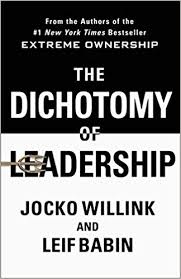More on this book
Community
Kindle Notes & Highlights
Read between
October 29 - November 30, 2019
Here are the commons symptoms that result from micromanagement: 1. The team shows a lack of initiative. Members will not take action unless directed. 2. The team does not seek solutions to problems; instead, its members sit and wait to be told about a solution. 3. Even in an emergency, a team that is being micromanaged will not mobilize and take action. 4. Bold and aggressive action becomes rare. 5. Creativity grinds to a halt. 6. The team tends to stay inside their own silo; not stepping out to coordinate efforts with other departments or divisions for fear of overstepping their bounds. 7. An
...more
Here are common symptoms that indicate when a leader is too hands-off with his team: 1. Lack of vision in what the team is trying to do and how to do it. 2. Lack of coordination between individuals on the team and efforts that often compete or interfere with each other. 3. Initiative oversteps the bounds of authority, and both individuals and teams carry out actions that are beyond what they have the authorization to do. 4. Failure to coordinate. While a micromanaged team might not coordinate with other teams because it doesn’t want to overstep its bounds, a team without good guidance may also
...more
Leaders are responsible for the output of the individuals on their team. The goal of any leader is to get the most out of every individual—to push each individual to reach his or her maximum potential so that the team itself can reach its maximum potential. Conversely, leaders must also understand that human beings have limitations; not every person on a team will be suited for a particular job. Some people might need a less technical position. Some people can’t handle stress. Some might not work well with others. Some might lack the creativity to come up with new ideas or solve problems. This
...more
An aggressive mind-set should be the default setting of any leader. Default: Aggressive. This means that the best leaders, the best teams, don’t wait to act. Instead, understanding the strategic vision (or commander’s intent), they aggressively execute to overcome obstacles, capitalize on immediate opportunities, accomplish the mission, and win.
“Aggressive” means proactive. It doesn’t mean that leaders can get angry, lose their temper, or be aggressive toward their people. A leader must always deal professionally with subordinates on the team, peers, leaders up the chain of command, customers or clients, and personnel in supporting roles outside the immediate team. Speaking angrily to others is ineffective. Losing your temper is a sign of weakness. The aggression that wins on the battlefield, in business, or in life is directed not toward people but toward solving problems, achieving goals, and accomplishing the mission.
To be overly aggressive, without critical thinking, is to be reckless. That can lead the team into disaster and put the greater mission in peril.
A chief contributing factor to recklessness comes from what military historians have long referred to as “the disease of victory.” This disease takes place when a few battlefield successes produce an overconfidence in a team’s own tactical prowess while underestimating the capabilities of its enemy or competitor. This is a problem not just for combat leaders but for leaders and teams anywhere, in any arena, throughout the business world and the civilian sector.
So be aggressive, but never reckless.
“You’re telling me that there aren’t any areas where you and your team can improve? You are currently at optimal performance and can’t get any better?”
Leaders must be humble enough to listen to new ideas, willing to learn strategic insights, and open to implementing new and better tactics and strategies. But a leader must also be ready to stand firm when there are clearly unintended consequences that negatively impact the mission and risk harm to the team.
that he had learned this fundamental truth from his U.S. Army mentors: “An organization does well only those things the Boss checks.” Regularly checking up on procedures showed the team what I found important. Had
So, take the challenge. Become the most effective leader possible. And while you should absolutely take Extreme Ownership of everything in your world, you must also absolutely strive to be extremely balanced in everything you do: with your subordinates, your superiors, your peers, your decisions, your emotions, and your life. In leadership, you will find challenges, you will find rewards, you will find struggles, and you will find fulfillment. But as a leader, if you can think and act with balance, you will achieve the goal of every leader and every team: Victory.


